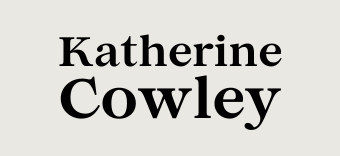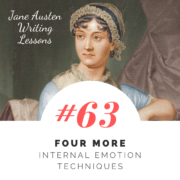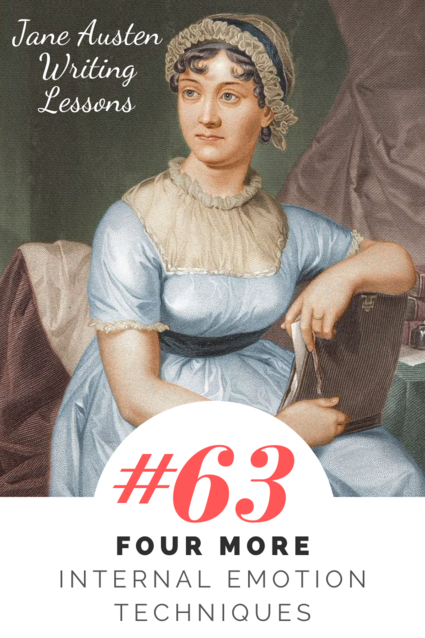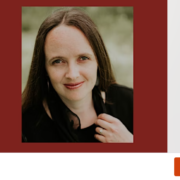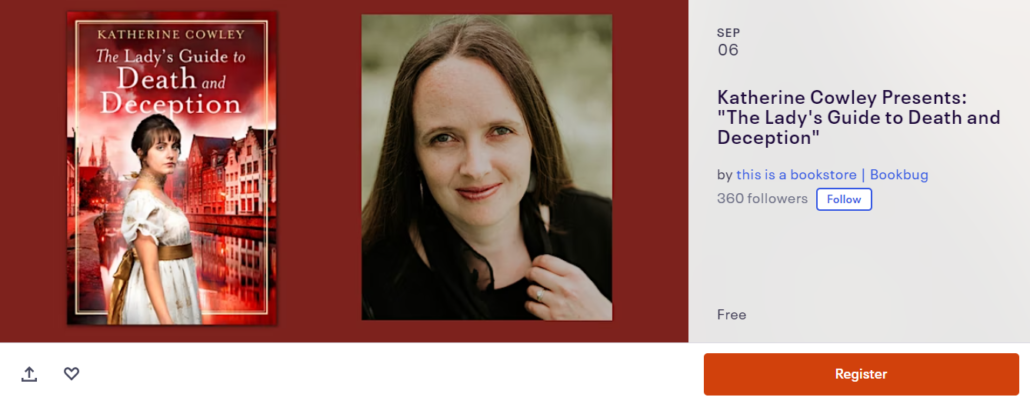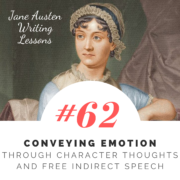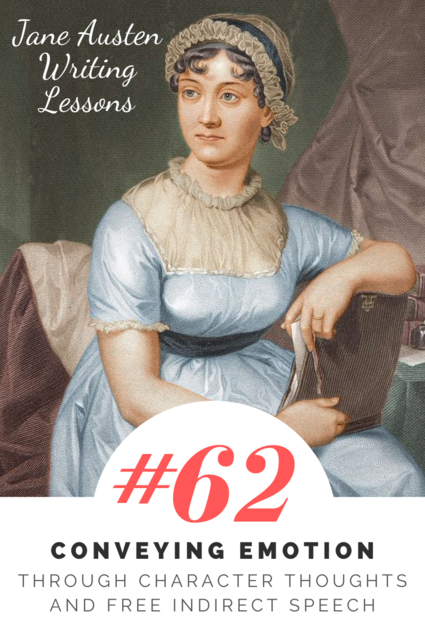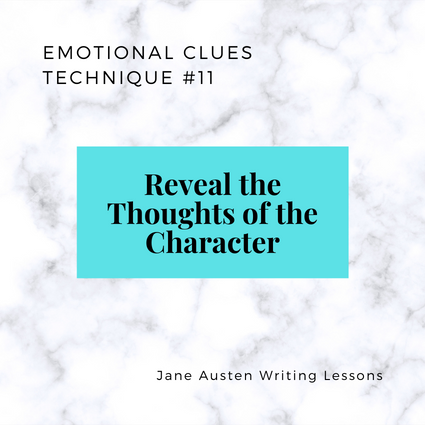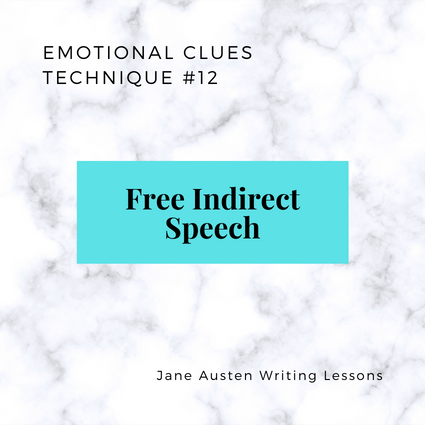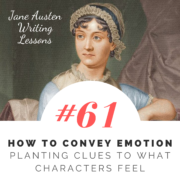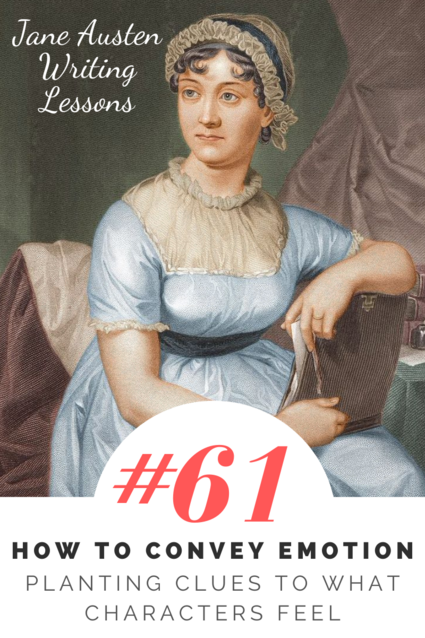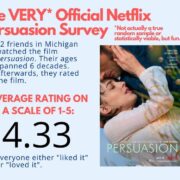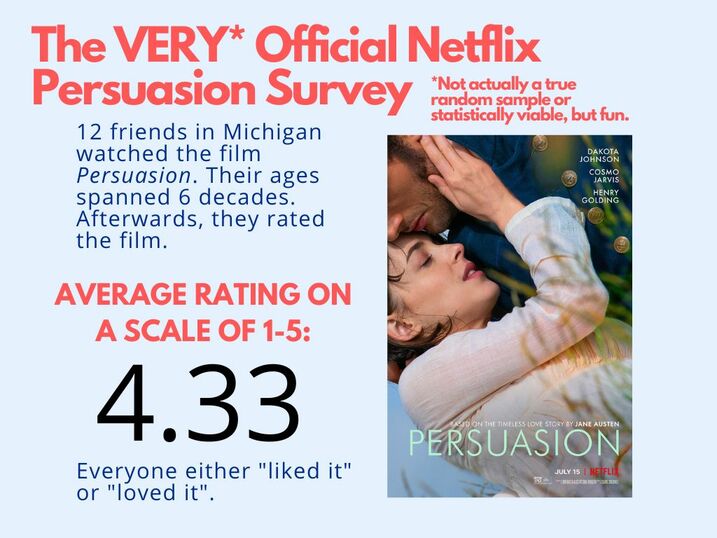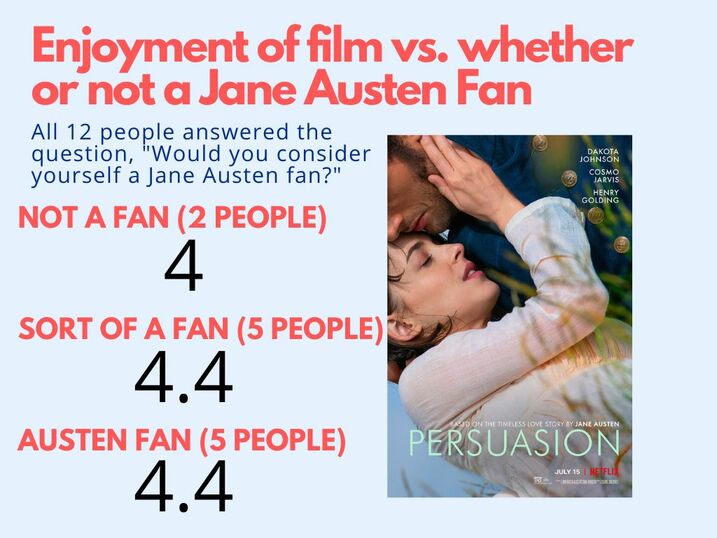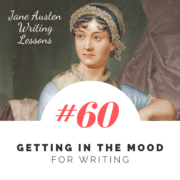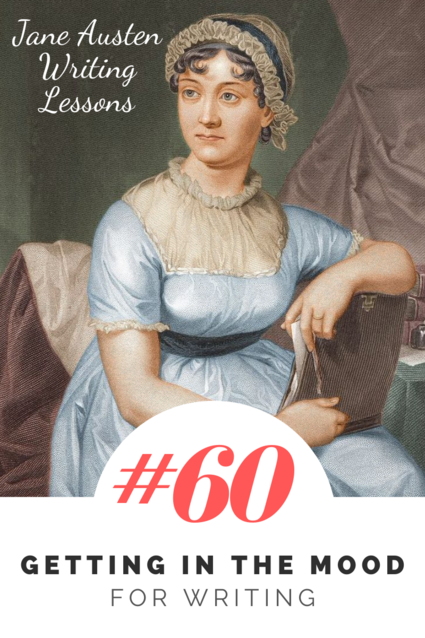#63: Four More Internal Emotion Techniques
In Jane Austen’s novel, Northanger Abbey, the character of Catherine Morland is filled with emotions, so much so that she is sometimes carried away in flights of fancy. Austen uses many of the techniques we’ve already talked about to plant clues to her emotional state, including sharing character thoughts, free indirect speech, relationship to setting as a window into emotion, concrete actions and behavior, awareness/lack of awareness, body language, verbs and adjectives, and dialogue.
There are four more key techniques that Jane Austen uses to convey emotion. These techniques work best for viewpoint characters, because they often require being in the character’s head. They are tools that can be applied for both very emotive characters, like Catherine Morland, and for characters that keep their emotions more concealed, subdued, and in check, like Elinor Dashwood in Sense and Sensibility.
Additional Internal Emotion Techniques (which are especially useful for viewpoint characters
- Punctuation, Syntax, and Rhythm
- Pointing to the past and/or to the future
- Repetition
- Physical sensation and internal physical sensation
We’ll consider two scenes from Northanger Abbey that demonstrate these four internal emotion techniques.
Internal Emotion Technique 1: Punctuation, Syntax, and Rhythm
Punctuation, syntax, and rhythm can be a powerful tool for conveying emotion, especially when the punctuation, syntax, and rhythm are markedly different from other sentences, passages, or scenes.
In Northanger Abbey, Catherine has met many new acquaintances. In particular, she has fallen for a certain Henry Tilney, and she has also become friends with Henry’s sister, Eleanor.
Eleanor wants a companion, so she and her father, General Tilney, invite Catherine to come stay with them at their home, Northanger Abbey. The narrator then gives us a sense of Catherine’s reaction. Take note of the punctuation, the syntax, and the rhythm that is employed:
Northanger Abbey! These were thrilling words, and wound up Catherine’s feelings to the highest point of ecstasy. Her grateful and gratified heart could hardly restrain its expressions within the language of tolerable calmness. To receive so flattering an invitation! To have her company so warmly solicited! Everything honourable and soothing, every present enjoyment, and every future hope was contained in it; and her acceptance, with only the saving clause of Papa and Mamma’s approbation, was eagerly given. “I will write home directly,” said she, “and if they do not object, as I dare say they will not—”
Note the heavy use of exclamation marks, the short sentences and other phrases that build with rapid commas, and the way that the rhythm builds to match her excitement.
Exclamation marks and commas aren’t the only punctuation marks Jane Austen employs to convey emotion—at other points in her novel she uses em dashes, question marks, and periods in revelatory ways. Long and short sentences, sentences with broken rhythm and smooth, sentences which feel like poetry—all of these are tools Austen uses to impact the reader’s experience of the character’s lived experience.
In a prior post, I analyzed Emma’s large discoveries near the end of the novel Emma. These discoveries show her that she has been wrong in so many ways, and this realization impacts her emotions. If you reread those passages, you see that punctuation, syntax, and rhythm are constantly in play to help us understand Emma’s experience.
While punctuation, syntax, and rhythm are especially useful at conveying the emotion of the viewpoint character, they can also be used to for non-viewpoint characters, but typically only in their dialogue. (We have no way of knowing their internal thoughts, but the way the punctuation, syntax, and rhythm of how they speak can definitely be effected by their emotions.)
Internal Emotion Technique 2: Pointing to the Past and/or the Future
In a previous lesson, we talked about how we can access a viewpoint character’s thoughts on a subject, and this can be used to reveal emotion. This technique is an extension of that. An extremely effective way to reveal emotion is to have a character think of something that happened in the past or in the future.
Past events can be ones which we experienced earlier in the novel. Pointing again to them creates emotional resonance between those events and the new passage. It can show the character creating meaning or connection, for good or for bad. It can recall prior emotions, or reinterpret past emotions into something new.
You can also point to past events that did not occur in the novel—that happened before the pages. This provides backstory, it paints a fuller picture of the character’s lives, and it can also illuminate why something might impact a character in a certain way.
The next passage is a little later in the same scene, after the Tilneys have invited Catherine to visit Northanger Abbey. In this passage, Catherine looks back on all her experiences in Bath, even the ones that were not always positive (some of the scenes with her friend Isabella were rather fraught) in a rosy light, as leading to this moment. How she is analyzing and calling upon the past gives a strong sense for her present emotional state.
The circumstances of the morning had led Catherine’s feelings through the varieties of suspense, security, and disappointment; but they were now safely lodged in perfect bliss; and with spirits elated to rapture, with Henry at her heart, and Northanger Abbey on her lips, she hurried home to write her letter….By the kindness of her first friends, the Allens, she had been introduced into scenes where pleasures of every kind had met her. Her feelings, her preferences, had each known the happiness of a return. Wherever she felt attachment, she had been able to create it. The affection of Isabella was to be secured to her in a sister. The Tilneys, they, by whom, above all, she desired to be favourably thought of, outstripped even her wishes in the flattering measures by which their intimacy was to be continued.
The paragraph continues by pointing to the future. Catherine immediately begins imagining and envisioning what her experience at Northanger Abbey might look like.
She was to be their chosen visitor, she was to be for weeks under the same roof with the person whose society she mostly prized—and, in addition to all the rest, this roof was to be the roof of an abbey! Her passion for ancient edifices was next in degree to her passion for Henry Tilney—and castles and abbeys made usually the charm of those reveries which his image did not fill. To see and explore either the ramparts and keep of the one, or the cloisters of the other, had been for many weeks a darling wish, though to be more than the visitor of an hour had seemed too nearly impossible for desire. And yet, this was to happen. With all the chances against her of house, hall, place, park, court, and cottage, Northanger turned up an abbey, and she was to be its inhabitant. Its long, damp passages, its narrow cells and ruined chapel, were to be within her daily reach, and she could not entirely subdue the hope of some traditional legends, some awful memorials of an injured and ill-fated nun.
Pointing to the future is a powerful tool to convey emotion, because it can reveal what a character expects, what they hope for or fear, whether they are high strung or analytical or relaxed. A character has no way of knowing what the future will actually hold, but how they think about the future reveals their current state.
Once again, this is a tool that is largely used for viewpoint characters.
Internal Emotion Technique 3: Repetition
Repetition is a powerful tool. Jane Austen uses repetition of action, of thought, of imagery, of attention, of words, and of certain sounds. You can repeat anything, as long as it creates a building sensation.
Repetition can connect things together. It shows what the character is focusing on, what their thoughts can’t avoid, what they keep coming back to. It can create rhythm, it can call back to something from earlier, or it can further develop an emotion or thought.
In the previous scene, we already saw the repetition of the word every (emphasis added):
Everything honourable and soothing, every present enjoyment, and every future hope was contained in it.
Later, when Catherine is at Northanger Abbey, she has a frightening night in her bedroom, partly because she has convinced herself that frightening things have happened in this space.
She wonders what is in an old-fashioned cabinet, and throughout the scene, she tries to open it again and again—a repetition of action. There is also a repetition of her experiencing the wind. Some characters might notice that it’s stormy, and it’s mentioned once, but in this scene, wind is mentioned again and again, and each time it shows the building of her emotions.
The window curtains seemed in motion. It could be nothing but the violence of the wind penetrating through the divisions of the shutters; and she stepped boldly forward, carelessly humming a tune, to assure herself of its being so, peeped courageously behind each curtain, saw nothing on either low window seat to scare her, and on placing a hand against the shutter, felt the strongest conviction of the wind’s force.
A little later in the scene we read:
The wind roared down the chimney, the rain beat in torrents against the windows, and everything seemed to speak the awfulness of her situation.
And again:
A violent gust of wind, rising with sudden fury, added fresh horror to the moment.
Later still:
She had not been used to feel alarm from wind, but now every blast seemed fraught with awful intelligence.
And one final reference to the wind:
The storm still raged, and various were the noises, more terrific even than the wind, which struck at intervals on her startled ear.
In early drafts, I sometimes include unneeded repetition. I’ll accidentally repeat a word or a phrase, I’ll start too many sentences in the same way, or I’ll have a character do the same thing twice for no reason. I always try to cut the accidental repetitions. The intentional repetitions can be powerful, though I always test them on readers to make sure my use of repetition is building something rather feeling like sloppy writing.
There is a myriad of ways you can use repetition for viewpoint characters. For non-viewpoint characters, repetition is most likely to be seen either in their dialogue or the in repeated actions.
Internal Emotion Technique 4: Physical sensation and internal physical sensation
For viewpoint characters and non-viewpoint characters alike, a character’s actions, behavior, and body language are a strong indicator of their emotions. Does a character drop a letter, walk slowly, run up the stairs, or fidget restlessly? Each of these can be an outward expression of their internal state.
For viewpoint characters, we can also use their physical sensations—things happening to their body—and their internal physical sensations—things happening inside the body that other characters cannot possibly know.
The following paragraph is from the scene with the wind, while Catherine is trying to open the cabinet. I’ve bolded a sentence that reveals Catherine’s physical sensations.
It was some time however before she could unfasten the door, the same difficulty occurring in the management of this inner lock as of the outer; but at length it did open; and not vain, as hitherto, was her search; her quick eyes directly fell on a roll of paper pushed back into the further part of the cavity, apparently for concealment, and her feelings at that moment were indescribable. Her heart fluttered, her knees trembled, and her cheeks grew pale. She seized, with an unsteady hand, the precious manuscript, for half a glance sufficed to ascertain written characters
Catherine is feeling her heart flutter. Her knees are trembling. And her cheeks are growing pale. Each of these physical sensations are her body’s manifestations of her emotion.
Her heart fluttering is a truly internal physical sensation. It is inside her body, and it effects and reflects her experience when she finally manages to open the cabinet.
Her cheeks growing pale is also a physical sensation, though it has an external component that other characters could notice, were they in the room. Her knees trembling is a physical sensation that would be rather unlikely for other characters to notice, but possible in certain situations.
Regardless, these are all physical sensations belonging to our viewpoint character that are part of her experience and are fair game for the narrator to mention.
If you want a resource on how to write about internal and external physical sensations, as well as body language and actions that might reflect certain emotions, I highly recommend the book The Emotion Thesaurus.
While some authors rely heavily on physical sensation and internal physical sensation to convey emotions, Jane Austen uses it sparingly. However, when she uses it, she does so to great effect.
Conclusion
There are so many tools that can be used to convey a character’s emotions. For viewpoint characters, we have the additional opportunity to submerse ourselves into their emotions, by using tools that aren’t as readily available to use on non-viewpoint characters, such as internal physical sensations, repetition, pointing to the past or future, and syntax.
In the next lesson we’ll look at the size or degree of emotions—the differences between conveying small, medium, and large emotions. I hope that you’ll join me!
Exercise 1: Chart your own physical sensations
Over the course of a day or a morning, record your own physical sensations and internal physical sensations. Did you touch something scratchy? Did something taste sour? Did the chair feel hard? Did your knee itch? Did your eyes feel unfocused? Did your back hurt? Did you lose your balance?
If relevant, jot down a word or two that captures your emotional state at the time. Was your physical sensation reflecting your emotions at the time? Did your physical sensations contrast your emotions? Did your physical sensations and internal physical sensations change your emotions?
Consider what you learned about physical sensations and emotions, and how you can incorporate that into your own writing.
Exercise 2: Finding a Place to Live
Write a brief scene in which a character is touring apartments or other places to live. In this scene, try to incorporate each of the techniques talked about in this lesson:
- Punctuation, Syntax, and Rhythm
- Pointing to the past and/or to the future
- Repetition
- Physical sensation and internal physical sensation
Exercise 3: Emotion Revision
Take a scene in a story you are writing and see if you are incorporating any of these techniques. If so, are there ways you could strengthen your use of the technique? If not, at what points would one or more of these techniques be useful? Now revise the scene.
Book Launch Party — The Lady’s Guide to Death and Deception
I already announced this in my newsletter (sign up if you want to make sure you don’t miss exciting news!), but I wanted to write a post about it as well.
Launch Party in West Michigan
My local indie bookstore, This is a Bookstore/Bookbug, is throwing a book launch party on September 6th at 6:30 p.m. Last time they ran out of seats and sold out of books, which was truly incredible.
At the launch party, I’ll talk about The Lady’s Guide to Death and Deception. This will be followed by a reading, a Q&A, and a book signing. We are also doing a Regency spy themed photo booth, which I am really excited about.
Tickets
Please reserve tickets in advance at Eventbrite (especially since the bookstore ran out last time!).
Closing Thoughts
Only eight more days until The Lady’s Guide to Death and Deception is out in the wild! I really loved writing this book, and I hope that you enjoy it.
#61: Conveying Emotion through Character Thoughts and Free Indirect Speech
In the previous lesson, we analyzed a scene in Sense and Sensibility and discovered 10 emotional clues that Jane Austen uses to convey what characters feel to the reader. These ranged from concrete actions to impressions to shifts to dialogue. These clues are extremely useful, because they can create an emotional picture even for minor characters, far removed from the narrator’s perspective.
But what if you are writing in close third person—from a narrator’s perspective, but with close access to a character’s viewpoint, thoughts, and perspective? Or what if you are writing first person, and the narrator is one of the characters? Or what if you are writing from an omniscient point of view, and the narrator has the ability to dip into the minds, viewpoints, and eyes of multiple characters?
If you are trying to convey the emotion for a viewpoint character, there are additional emotional clues that you can use. In this lesson we will focus on two related but separate tools: revelations of character thoughts and free indirect speech.
Emotional Clues for Viewpoint Characters: Revelations of Character Thoughts and Free Indirect Speech
One of the most powerful tools for a viewpoint character is the fact that the writer can directly convey the characters thoughts. This is only possible for a viewpoint character—only for a viewpoint character can the narrator be seen to know, fully and completely, what that individual is thinking.
There are many ways that a narrator can reveal character thoughts. Often this occurs through:
- Summarizing the character’s thoughts,
- Stating the character’s thoughts
- Making statements on/connections related to the character’s thoughts.
Another related method to reveal character thoughts is free indirect speech. Free indirect speech (also known as free indirect discourse) was not invented by Jane Austen, but she was one of the first writers to use it in large amounts. So what is free indirect speech?
Free indirect speech is when the narrative shifts from a slightly more distant perspective of the narrator, to directly and fully into the character’s perspective, thoughts, and visceral experience.
Examples of Conveying Emotion by Revealing Character Thoughts and Free Indirect Speech
A passage from Jane Austen’s novel Mansfield Park will illustrate both types of emotional clues more fully.
This is a scene from the second half of the book. Fanny’s female cousins have left home, and her uncle, Sir Thomas, is truly noticing Fanny for the first time. Sir Thomas decides to throw a ball. He informs Fanny that she is going to open the ball—a position of great honor.
Throughout this passage, the third person narrator sticks close to Fanny’s perspective. This provides an opportunity to describe Fanny’s thoughts and reflections, her reactions and her emotions. At just a few points, the narration slips into free indirect speech, and we are completely immersed in Fanny’s perspective. The sentences which use free indirect speech are bolded. (Note that in the original, there is no bolding—there is nothing that distinguishes or separates the free indirect speech visually from the narrator’s descriptions and summaries of Fanny’s thoughts.)
In a few minutes Sir Thomas came to her, and asked if she were engaged; and the “Yes, sir; to Mr. Crawford,” was exactly what he had intended to hear. Mr. Crawford was not far off; Sir Thomas brought him to her, saying something which discovered to Fanny, that she was to lead the way and open the ball; an idea that had never occurred to her before. Whenever she had thought of the minutiae of the evening, it had been as a matter of course that Edmund would begin with Miss Crawford; and the impression was so strong, that though her uncle spoke the contrary, she could not help an exclamation of surprise, a hint of her unfitness, an entreaty even to be excused. To be urging her opinion against Sir Thomas’s was a proof of the extremity of the case; but such was her horror at the first suggestion, that she could actually look him in the face and say that she hoped it might be settled otherwise; in vain, however: Sir Thomas smiled, tried to encourage her, and then looked too serious, and said too decidedly, “It must be so, my dear,” for her to hazard another word; and she found herself the next moment conducted by Mr. Crawford to the top of the room, and standing there to be joined by the rest of the dancers, couple after couple, as they were formed.
She could hardly believe it. To be placed above so many elegant young women! The distinction was too great. It was treating her like her cousins! And her thoughts flew to those absent cousins with most unfeigned and truly tender regret, that they were not at home to take their own place in the room, and have their share of a pleasure which would have been so very delightful to them. So often as she had heard them wish for a ball at home as the greatest of all felicities! And to have them away when it was given—and for her to be opening the ball—and with Mr. Crawford too! She hoped they would not envy her that distinction now; but when she looked back to the state of things in the autumn, to what they had all been to each other when once dancing in that house before, the present arrangement was almost more than she could understand herself.
There is so much incredible emotion conveyed in these two paragraphs. We feel as if we are with Fanny, next to the dance floor. We are with her in thought, in perspective, in the moment.
Let’s look at the difference between when the narrator conveys Fanny’s thoughts through summary, statement, and analysis, and when the narrator conveys Fanny’s thoughts through free indirect speech.
She could hardly believe it.
Her thoughts flew to hose absent cousins with most unfeigned and truly tender regret
She hoped they would not envy her that distinction now
But when she looked back to the state of things in autumn…the present arrangement was almost more than she could understand herself.
In each of these phrases, we have access to Fanny’s thoughts, but it is through the filter of the narrator. These thoughts are summarized, they’re condensed, they are stated, they are made beautiful through connection and analysis. And these thoughts certainly give the reader a lens clearly into Fanny’s emotions, in a way that’s only possible because she is the viewpoint character.
In the sentences that use free indirect speech, this narrator’s filter—even though it is a close third person filter—is removed. We are completely in her thoughts, in the moment, with no summary or larger picture perspective:
To be placed above so many elegant young women! The distinction was too great. It was treating her like her cousins!
These are Fanny’s actual thoughts, in the moment—this is her emphasis, her internal exclamations. And then, a few lines later we read:
So often as she had heard them wish for a ball at home as the greatest of all felicities! And to have them away when it was given—and for her to be opening the ball—and with Mr. Crawford too!
The power of free indirect speech is that in these moments of immersion we, as the reader, become one with the character and her perspective. Nothing separates us—for a moment, we become her.
In this last sentence of free indirect speech, note how the syntax changes. We have three clauses, all starting with “and,” stacked on each other using em dashes. For this sentence, it creates a sort of miniature use of stream of consciousness—the natural, continuous, not always sequential direction of thoughts. (Authors who are famous for their use of stream of consciousness, like Virginia Woolf, use it for much longer passages. In this passage by Austen, this sentence leans towards stream of consciousness, but because of its length is properly categorized and free indirect speech.)
The Power of Conveying Emotion Through Character Thoughts and Free Indirect Speech
One of the powers of novels and short stories is that you can convey the viewpoint character’s thoughts, perspectives, and emotions, through summary, statement, making connections to other things, and free indirect speech. This is an opportunity that is not present in the same way in other mediums (for example, the only way movies and TV can do this is through voice over narration, and this only is effective for certain stories).
While free indirect speech has the advantage of immersing us fully into the character’s thoughts and perspectives, other sorts of revelations of character thoughts (like summary, statement, and making connections) have their own advantages: they can provide context, weave in themes and insights, create layering, and sometimes create an important distance between the reader and the emotion.
Like any tools to convey emotion, these should not be used exclusively, but when coupled with other tools, these techniques can help the reader feel a connection to the characters and understand their state of mind throughout the story.
A Few Final Notes: Italics and First Person Narrators
- Instead of using free indirect speech, some modern stories will italicize character’s direct thoughts. This draws attention to it as a thought, separate from the main narrative, but has many of the same effects as using free indirect speech.
- Texts written in first person rather than third person are, by definition, entirely in the thoughts and viewpoint of the first person narrator. However, there is still often a sense of the narrator as the storyteller—the narrator is still a filter. This is especially the case with a first person past tense point of view: there is often the sense that the story is being told later, and sometimes with accompanying reflection. At times, the descriptions and thoughts will feel even closer, more immediate, and more immersive, and this can create a similar effect as using free indirect speech.
- First person present tense is meant to feel even more immediate than first person past tense, as everything is unfolding before the character (and the reader) in the present. Yet like with first person past tense, at times we can feel even closer and more submersed in the character’s perspective.
Exercise 1: An Imitation
Write an imitation of the two paragraphs from Mansfield Park. You should use your own characters, and a new situation which parallels the original (instead of a ball, another situation in which a character might be surprised, like being asked to demonstrate something at work, or being chosen as a starter in a soccer game).
As you write your own two paragraphs, try to match Austen’s use of emotional clues. When she summarizes an emotion, try to summarize your own character’s emotion. When she uses free indirect speech, use free indirect speech. When she makes a connection to something that happened in the past, make a connection to something that happened in the past.
Once you’re finished, read the paragraphs aloud and see how the emotions build for your character.
Exercise 2: Italics vs. Free Indirect Speech
Write two versions of a paragraph in third person where a character experiences emotion. In the first version, choose one to three spots where you express the characters thoughts in italics. In the second version, incorporate these same thoughts but using free indirect speech. Which approach works better for your particular passage and writing style?
Exercise 3: First Person Analysis
Choose a book or a short story written in first person. Read a few passages, analyzing how the emotion is conveyed through thoughts. Despite being third person, are there portions where we are farther from or closer to the character’s emotions?
#61: How to Convey Emotion: Planting Clues to What Characters Feel
It took me several years of writing fiction to really learn how to convey emotions. As a writer, you often know what your characters are feeling, but how do you convey that to the reader in a way that helps them to believe it, and sometimes even to feel it with the characters?
One of the ways I learned to write emotions was by studying writers who excel at it. Jane Austen is a master of emotion. Let’s look at a passage rife with emotion from her first published novel, Sense and Sensibility.
At this point in the novel, most characters assume that Marianne Dashwood and John Willoughby are engaged to each other. The other Dashwood family members leave the house, knowing it is likely that Willoughby will call upon Marianne.
They return to witness a flurry of unexpected emotions.
“They were no sooner in the passage than Marianne came hastily out of the parlour apparently in violent affliction, with her handkerchief at her eyes; and without noticing them ran up stairs.”
First, let’s consider the word apparently. Marianne is “apparently in violent affliction.” This word choice is important. Marianne is not a viewpoint character in this chapter—the point of view is from Elinor’s perspective. Elinor and her mother cannot actually, with any certainty, know how Marianne feels. They cannot peer into her mind. And even if she were to tell them, it would be filtered through both language and what she wants them to know.
As such, they are forced to interpret her behavior in order to understand her emotions. Readers must do the same thing, especially when reading about non-viewpoint characters. We look at clues that indicate how the characters feel, and, like Elinor and Mrs. Dashwood, we come to conclusions on someone’s emotional state.
What are the clues in this sentence?
- Marianne came hastily out of the parlour
- Apparently in violent affliction
- With her handkerchief at her eyes
- Without noticing them
- Ran up stairs
These clues can be categorized into different types of clues that you can use as a writer to convey emotions:
Emotional Clue Technique 1: Concrete actions and behavior
Marianne moves with speed; she has her handkerchief pressed to her eyes (and we can assume she is crying); she runs up the stairs.
Concrete actions and behavior are the results of choices made by a character, and choices are always influenced by a character’s emotions. Different characters react to different situations in very different ways—not everyone expresses strong emotions with strong outward displays. But even if a character is suppressing or hiding their emotions, it will impact their actions and behavior.
This is an important emotional clue to place, whether or not you are attempting to capture the viewpoint character’s emotions, or the emotions of another character.
Emotional Clue Technique 2: Awareness/lack of awareness
Marianne does not notice or acknowledge her family members, even as she rushes past them.
Certain types of emotions will point a character outward—charitable emotions, or concern for others. Other emotions will point a character inward or narrow their focus to a smaller awareness.
This emotional clue is one that Austen uses less frequently, but to great effect. In terms of viewpoint characters, a viewpoint character may not realize what they are aware or not aware of, but it will impact the sort of description that is used in a scene.
Emotional Clue Technique 3: General impressions
Marianne is apparently in violent affliction.
Here, Elinor and her mother are interpreting their general impressions—their feel of the situation. This is likely influenced by dozens of tiny details that Austen does not describe. Maybe Marianne’s face is pale; maybe her arms hang a little limply; maybe she’s sniffling. All of the time, we interpret dozens of tiny details—sometimes subconsciously—and come to conclusion. Rather than including every possible detail, we are given Elinor’s conclusion, which is useful in that it brings us back to the viewpoint character and how she is processing the events.
When a character interprets someone’s emotions, it’s often useful to have a qualifier that signifies that the point of view character is making an interpretation (so readers do not confuse it with the narrator proclaiming this emotion as fact, which can read as a point of view shift). Austen uses “apparently” but writers also use “likely,” “probably,” “it seemed that,” and a number of other signifiers.
More Types of Emotional Clues
Austen goes on to use more types of emotional clues in the passage (and she plants more emotional clues in the categories we’ve already established). Let’s read more of the scene and look for additional types of clues:
Surprised and alarmed they proceeded directly into the room she had just quitted, where they found only Willoughby, who was leaning against the mantel-piece with his back towards them. He turned round on their coming in, and his countenance showed that he strongly partook of the emotion which over-powered Marianne.
“Is anything the matter with her?” cried Mrs. Dashwood as she entered—“is she ill?”
“I hope not,” he replied, trying to look cheerful; and with a forced smile presently added, “It is I who may rather expect to be ill—for I am now suffering under a very heavy disappointment!”
“Disappointment?”
“Yes, for I am unable to keep my engagement with you. Mrs. Smith has this morning exercised the privilege of riches upon a poor dependent cousin, by sending me on business to London. I have just received my dispatches, and taken my farewell of Allenham; and by way of exhilaration I am now come to take my farewell of you.”
“To London!—and are you going this morning?”
“Almost this moment.”
“This is very unfortunate. But Mrs. Smith must be obliged;—and her business will not detain you from us long I hope.”
He coloured as he replied, “You are very kind, but I have no idea of returning into Devonshire immediately. My visits to Mrs. Smith are never repeated within the twelvemonth.”
“And is Mrs. Smith your only friend? Is Allenham the only house in the neighbourhood to which you will be welcome? For shame, Willoughby, can you wait for an invitation here?”
His colour increased; and with his eyes fixed on the ground he only replied, “You are too good.”
Emotional Clue Technique 4: Stating the Emotion
Elinor and her mother are surprised and alarmed.
The emotion of the viewpoint character can be stated, as Austen does here. This is not a technique she frequently uses—if used improperly, stating an emotion feels like cheating. If it feels unearned, we won’t necessarily believe it. When Austen states the emotion, it’s almost always in moments like this, where the situation and our past knowledge of the characters makes it obvious in and of itself that this would be the emotion felt by the viewpoint character. Of course Elinor and Mrs. Dashwood are going to be startled and alarmed by Marianne’s extreme emotional reaction. Stating it allows Austen to quickly solidify the reaction and move on to more important parts of the scene.
Most of the time, stating the emotion needs to be for the viewpoint character, unless it is the viewpoint character’s interpretation of another’s emotions (see clue technique 3).
Emotional Clue Technique 5: Body Language
Willoughby is leaning against the mantle-piece with his back towards them.
Body language is a powerful indicator of a character’s emotions. If a character is feeling confident, upset, flustered, or distracted, it will often have an impact on their body language. Some characters have little control or awareness of how their body language is conveying their emotional state; other characters will attempt to control their body language to mask emotions.
Emotional Clue Technique 6: Facial Expressions
His countenance showed that he strongly partook of the emotion which over-powered Marianne.
Facial expressions often provide clues to a character’s emotions. Austen typically uses this type of emotional clue when capturing the emotions of a non-viewpoint character. Viewpoint characters, when experiencing emotions, are not always likely to think about what facial expressions they are using (though in some situations it can work).
Emotional Clue Technique 7: Verbs and Adjectives
Cried Mrs. Dashwood; with a forced smile; he coloured.
While this technique often overlaps with other techniques, it is such a powerful technique that it is useful to consider on its own. What verbs will best express someone’s emotion? What adjectives can enlighten the emotions of a scene?
Mrs. Dashwood does not just ask what is wrong with her daughter—she cries it. Calling a smile forced reveals that it does not feel genuine, and thus hints at the real emotion beneath. The fact that Willoughby’s face colours hints at shame or embarrassment in key parts of the conversation.
It’s important not to overindulge in this technique. Note that most of these lines of dialogue don’t include a verb that describe the characters, or how they’re saying their lines. Using verbs and adjectives that convey emotions can be most powerful when used sparingly, because we’re not inundated and it focuses the reader on the key, compelling details.
Emotional Clue Technique 8: Dialogue
Mrs. Dashwood has asked Willoughby a question about Marianne, but then his dialogue focuses on himself and his troubles. Mrs. Dashwood’s continuing questions indicate that her constant surprise and changing understanding of the situation. Willoughby keeps most of his statements very formal and factual. While at this point readers cannot be conclusive about Willoughby’s motivations or the deeper layers behind his dialogue, readers discover this later in the book.
What a character says can reveal or conceal their emotions. Ultimately, dialogue is an action taken by a character, and what they choose to say and how is influenced by their emotional state.
Emotional Clue Technique 9: Shifts of Emotion
As the conversation continues, there is a shift in Willoughby’s emotions. Not only is he feeling whatever emotions were incited by his conversation with Marianne, but a new emotion arrives: a discomfort and a desire to escape the situation.
The conversation continues with Mrs. Dashwood emphasizing that Willoughby is always welcome at their cottage, and then we read:
“My engagements at present,” replied Willoughby, confusedly, “are of such a nature—that—I dare not flatter myself—”
He stopped. Mrs. Dashwood was too much astonished to speak, and another pause succeeded. This was broken by Willoughby, who said with a faint smile, “It is folly to linger in this manner. I will not torment myself any longer by remaining among friends whose society it is impossible for me now to enjoy.”
He then hastily took leave of them all and left the room. They saw him step into his carriage, and in a minute it was out of sight.
Emotions—whether large or small—are not static. They can change or shift within a sentence or scene, or they can be joined by other emotions. Conveying shifts of emotion is a useful technique that helps the reader understand characters and the situation.
Emotional Clue Technique 10: Silence/Pauses
Mrs. Dashwood was too astonished to speak. Another pause succeeded—neither Willoughby or Elinor speak either. In fact, Elinor has not spoken yet during this scene, perhaps because she feels it is not her place.
Silences and pauses can be powerful tools to reveal emotions. Sometimes emotions can be too strong for action or dialogue. Sometimes inaction reveals an inability to process an emotions. Sometimes pauses are because an emotion makes it difficult to see a way forward. Who breaks the pause and how can also be revelatory.
Recap/Conclusion
In this short scene, Austen uses ten techniques that provide emotional clues to the reader, to help the reader understand—and experience—the emotions of the characters.
Let’s look at them again, in list form:
- Concrete actions and behavior
- Awareness/lack of awareness
- General impressions
- Stating the Emotion
- Body language
- Facial expressions
- Well Chosen Verbs and Adjectives
- Dialogue
- Shifts of Emotion
- Silences/pauses
This scene is a key emotional scene—it’s a turning point in the novel, where everything changes for Marianne and the other characters. So it makes sense that it uses ten different techniques that provide clues to the reader.
These aren’t the only techniques that Austen uses as emotional clues. In a previous Jane Austen writing lesson, I discussed how setting can be used to complement or contrast emotions. In the coming weeks, I’ll discuss other techniques for emotions that work particularly well for viewpoint characters (like free indirect speech, repetition, and punctuation). We’ll also talk more about differences between conveying small, medium, and large emotions, and ways that different characters express or deal with their emotions.
Exercise 1: Incorporating emotional clues
Part 1: From the list of ten emotional clues, choose the three that you are most comfortable using to convey emotions. Now write a paragraph or brief scene that uses these three emotional clues.
Part 2: Now return to the list of ten emotional clues, and choose the three that you are least comfortable using to convey emotions. Rewrite the paragraph or brief scene using these three emotional clues instead.
Exercise 2: Random number generator story
Step 1: Choose an everyday task (going to the grocery store; attending school; working out; etc.)
Step 2: Choose a predominant emotion (happiness; anger; frustration; fatigue; etc.)
Step 3: Use a random number generator to select 5 numbers between 1 and 10 (there can be duplicates). Write them down in the random order generated by the widget.
Step 4: Write a scene that has a character complete the everyday task and incorporates the predominant emotion. Each type of emotional clue should be used in the storytelling. These emotional clues can be grouped together in the scene, or spread throughout the scene, but they must be included in the order dictated by the random number generator.
Exercise 3: Analyze the writing of an author you love (who is not Jane Austen). What emotional clues do they use to hint at or convey the characters’ emotions? Do they use the same emotional clues as Austen uses, or different ones? How are they incorporated into scenes?
Review of Netflix’s Persuasion (with Survey Data)
I love adaptations, and I love Jane Austen. So I had to watch Netflix’s new adaptation of Persuasion, starring Dakota Johnson, Cosmo Jarvis, and Henry Golding. I decided to make a movie night of it and invited a bunch of friends over. We watched the film. There was much laughter. The credits rolled. And then I handed out surveys.
Yes, surveys.
You come to a girls night at my house, and you may end up taking a survey.
What was most interesting to me was actually the qualitative results–what people liked and disliked from a film standpoint–but first, let’s look at overall impressions.
Overall Impressions/Quantitative Results: Enjoyment Factor
I minored in film in college, and I did a masters in English. I love movies, and I love books. And I feel like they’re very different things. But in terms of a movie that’s worth watching, you need to know if it’s enjoyable or not. That’s a fundamental part of the film viewing experience.
I gave everyone a scale of 1 to 5 and asked them how much they enjoyed the film.

And as you saw from the first graphic in this post, people liked the movie. We had an average of 4.33 stars. And everyone either liked it or loved it.
I also wanted to see whether or not someone’s enjoyment of the film was influenced by how much they feel like a Jane Austen fan. Now, there is no official rubric for what makes someone a true Jane Austen fan (though a rather hilarious character in the film Austenland attempts to define a true fan). So I simply let people judge for themselves.
Would you consider yourself a Jane Austen fan?
- Yes
- No
- Sort of
Note that I included a “sort of” category. To me, I see people who rated themselves as “sort of” Jane Austen fans as casual fans or those who might have engaged with mostly 1 or 2 of her books. But I didn’t put a description–I wanted people to put themselves wherever they felt most comfortable.
And here’s the results, with the averages of how they rated the film:
In general, those that either consider themselves Jane Austen fans, or “sort of” Jane Austen fans, rated the movie higher than those who didn’t.
One lady loves Jane Austen, and Persuasion is her favorite novel. She has watched (and owns) other adaptations. And she gave the film 5 stars.
The Qualitative Results: Filmic Choices
Then came the qualitative questions. I asked what, from a film technique standpoint, people thought worked well, and what didn’t work as well for them.
Survey Results: What Worked Well in Netflix’s Persuasion
There was a wide range of responses. One person, a self-professed Jane Austen fan, wrote:
“I felt like the breaking of the fourth wall was a wink and a nod to the humor of the author herself.”
Several other people also commented on how they liked the breaking the fourth wall and Anne’s direct dialogue with the camera/viewer.
The cliffs scene was a favorite, someone else really liked the dialogue, and people generally liked the emotions that were conveyed:
“I thought it captured well [the] regret, sorrow, and second chances.”
There were people who mentioned really liking:
- The music
- The costumes
- The dialogue
- That the storyline was clear
- Mary’s character/the humor she added to the story
One person, a Jane Austen fan, wrote:
“The Elliots were all true to Austen’s characters.”
I felt the same. Mary, Elizabeth, Sir Walter, the Musgroves–they managed to capture some of the essence of Austen’s characters.
One person who was not a Jane Austen fan wrote:
“I liked that I could understand it all. Older English mixed with modern. Some other movies I get lost sometimes cause of the language.”
For her, the modern references and metaphors (“I can never trust a 10”) really helped make the film more accessible.
I’ll close with one last positive comment:
“I loved all of it.”
Survey Results: What Didn’t Work a Well in Netflix’s Persuasion
First, I went to film school. What “doesn’t work” is a very subjective thing. And it’s almost more useful to consider what the goals of the film were and how well it achieved those goals.
However, I decided to spare my guests a 30-minute lecture on how to judge a film’s merit, and instead just asked on the survey “What didn’t work as well for you?”
Here were a few of the responses:
“I thought Anne drank too much.”
This is a definite shift to a book. Anne may or may not be an alcoholic in the movie.
Another person comment on the modern references:
“The modern language/references were occasionally jarring against the 1800s visuals.”
This is interesting because I only had two people comment on the modern languages/references. One person positively, and one person semi-negatively.
I’m someone who loves historical things. I put hundreds of hours into making my Jane Austen-inspired novels historically accurate, and I tried to make the language match Austen’s. But I thought this film was cohesive in being a bit ahistoric–not completely accurate costumes, some modern languages and references, the very uncomfortable octopus sucking scene, the frowny face drawn by Mary on her forlorn note. So even though it’s not how I’ve approached my own Austen adaptations, the modern languages/references worked.
Most people didn’t have any complaints. I got a lot of no responses on this final question, and several that read:
“No major criticisms.”
And
“Nothing, it was fun.”
Some Positive Results
One person commented on her survey:
“Now I want to read it.”
There were several other people who verbally expressed the same sentiment. And if a film makes you want to read Jane Austen, I always see that as a good thing.
Several other people (including people who had given the film a “4: I liked it”) plan to rewatch it, some of them with their husbands.
My Own Personal Thoughts
I thoroughly enjoyed myself.
I love the original novel. I love Jane Austen’s use of language. I love the nuance. I love the friendship with Mrs. Smith and that entire subplot (which was not included in the film). I like Jane Austen’s subtle commentaries on the war, on politics, on rhetoric, on education, on the role of the social sphere in a woman’s life. And these are all good, beautiful things that were not in the film.
But I thought it was a really good adaptation.
Fresh? Yes.
Interpreting characters a little differently? For sure.
Taking a new vision to Austen? Yes.
I think it’s useful to note that the director, Carrie Cracknell, is largely a theatre director. I feel like theatre-goers expect a wider range of adaptations than film-viewers, and so this adaptation may surprise some viewers. But generally, I think people will enjoy it.
Hardcore Jane Austen fandom does have a solid contingent of purists that can be rather judgmental on anything that does not fit their conceptions of what a Jane Austen adaptation should look like. If you’re looking for complete accuracy for the novel, you’re going to be disappointed. However, that’s not what makes an adaptation interesting to me.
There’s a great film theory article by Richard Stam called “Beyond Fidelity: The Dialogics of Adaptation.” He talks about how “fidelity” and the moral language we use to judge film adaptations can actually get in our way as film viewers. He posits that a film may be choosing an essence of the original and putting that into a new genre. But an adaptation is not pure transference–Stam talks about how an adaptation can be:
- Translation
- Reading
- Dialogization
- Cannibalization
- Transmutation
- Transfiguration
- Signifying
He spends a great number of pages going into each of these things–so if you want to read about how an adaptation can be a dialogue with the original, or a transmutation, check out his article.
(I do want to point out that there have also been some very racist critiques of Persuasion. Which is honestly very sad to me. I personally think color blind cast is amazing. Also, despite the white-ness of many Austen adaptations, Regency England was actually quite a diverse place, and that were people of many races at all levels of society.)
Netflix’s Persuasion is a film that I plan to rewatch. Despite loving the novel Persuasion, I’ve never actually seen the other film adaptations, and now I’m interested in watching them–broadening my horizons and such.
Now Go Forth and Watch!
Despite my survey being so VERY official (and not statistically significant), I think it’s fair to recommend that you go watch Netflix’s Persuasion and judge the film for yourself.
#60: Getting in the Mood for Writing
There are days when writing comes easily for me: when I’m excited to get started, when I feel a spark, an unstoppable drive to write.
But then there are plenty of times when I have the time to write, when I’ve scheduled and planned out writing time, and I get to the computer and have a difficult time getting started.
Jane Austen had her difficult writing days as well. In a previous post, I discussed how distractions (like visitors and thoughts of mutton) made writing more difficult for her. There were also other days when she found difficulty writing because she was fatigued or because her pen was too hard.
On October 26, 1813, Jane Austen wrote a letter to her sister Cassandra and in her very first paragraph noted: “I am at all in a humour for writing.”
It’s comforting that Jane also had days where she was not in the mood to write. But what’s interesting is that her sentence doesn’t end there: she uses a semicolon. Here’s the full statement:
I am not at all in a humour for writing; I must write on till I am.
For Austen, the solution to not being in the mood for writing is simple: to write.
I’ve found that 95% of the time, this works for me too. If I can sit down and truly write (without getting distracted by twitter or anything else), then I start to feel like writing. A lot of times I set a timer for 30 minutes. I make a commitment to myself: I don’t feel like writing, but I have to do at least 30 minutes. And then I can walk away. But by the end of the 30 minutes, most of the time I am in the mood for writing and keep on going.
The 5% of the time when this doesn’t work for me, there’s something else going on. Mary Robinette Kowal has an excellent blog post titled “Sometimes Writers Block is Really Depression” where she talks about some of these other reasons we get stuck and don’t feel like writing, whether it’s plot problems or depression. Recognizing what the plot problem is can often help me get in the mood for writing. In the case of depression, taking steps like Mary Robinette did can help me improve my mental well being and make realistic goals for myself, which, in turn, can help me be in the mood for writing.
How do you get in the mood for writing? How do you get past the difficulty of starting? It doesn’t have to be Jane Austen’s method, but if you can figure out what works for you, it will help you make more of your writing sessions feel worthwhile. I know some writers who have a song they always listen to before writing, or who meditate for five minutes. I know some writers who think about their story while taking a shower, and then sit down at the page. I know some writers who turn off the internet or hide their phone. Regardless, whether it’s deciding to write until you feel like writing, or using another method, there truly are things you can do to put yourself more in the mood for writing.
If you have other methods that help get you in the mood for writing, please share in the comments!
Exercise 1: Plan out a few writing sessions for the next week. These don’t have to be long. And then when it is time for these sessions, write even if you don’t feel like writing.
Exercise 2: Spend fifteen minutes writing in a form that you don’t normally use to write. This might be in a notebook, in cursive, through dictation, on notecards, etc. Then reflect on the experience: how did this change your writing process and your thoughts about writing?
